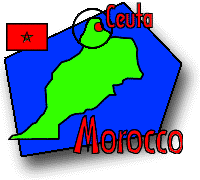
Person of the Day: Ahmed Habri ![]()
Place of the Day: Artisan School
Group Dispatch, September 28–29

Questions? Ask Padraic ![]() !
!
 |
 |
 |
 |
 |
|
Itinerary/ Journal |
Discussions |
About Morocco |
eDscape Projects |
Scrapbook |
|
|
|
|
|
|
|
Copyright 1997-2004 BikeAbout. All rights reserved.